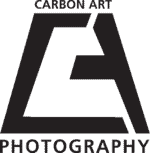What Is Carbon Transfer Printing?
Carbon transfer printing was perfected by Sir Joseph Swan in 1864 and was the first permanent photographic printing process. In spite of the numerous photographic processes that have been developed between the 1860’s and the current day, carbon transfer prints are still considered by many to be the most beautiful as well as archival form of photography. Adding to the beauty of the final prints is the fact that it is the only photographic process that allows the printer to create an image that truly has a three-dimensional look, which is the result of having a very noticeable “relief”. Specifically, the shadow areas of the image are the result of a thick layer of pigmented gelatin while the highlights are areas created by very thin layers of pigmented gelatin.
Though carbon printing has always been “a labor of love”, it is an intensive time consuming and technologically demanding process. I am one of the few exclusive carbon printers who prefers the aesthetics of its remarkable beauty and longevity over all other processes. In the hands of a skilled printer, the carbon process offers a wide range of image characteristics as well as the ability to create virtually any color or tone in the final print. I only print my work from camera exposed negatives using the carbon transfer process. I have dedicated myself to the practice of carbon printing exclusively. At its peak carbon transfer printing was considered “The Process of Royalty.”
Why Carbon Transfer Printing? My Philosophy
As an artist who is working in a historic process from the early days of photography I feel it is important to keep the process as pure as I can. I work with my hand made cameras, use film and I feel this keeps me connected to the past. Most contemporary carbon printers today have incorporated 21st century technologically into their process. The use of digital negatives has become somewhat of a mainstay for the alternative process printer. I feel this lends itself to the natural inclination of making “adjustments” to the original image in order to produce a corrected digital negative. Right or wrong is a personal decision. My challenge is to produce as fine a negative as I can in the field in order to produce a work of art unique to the vision of the artist. To me, this is much more challenging than relying on technologically to assist me in creating my one of a kind works of art. I remain dedicated to this philosophy for I feel it keeps my images pure and increases their value to the collector.

